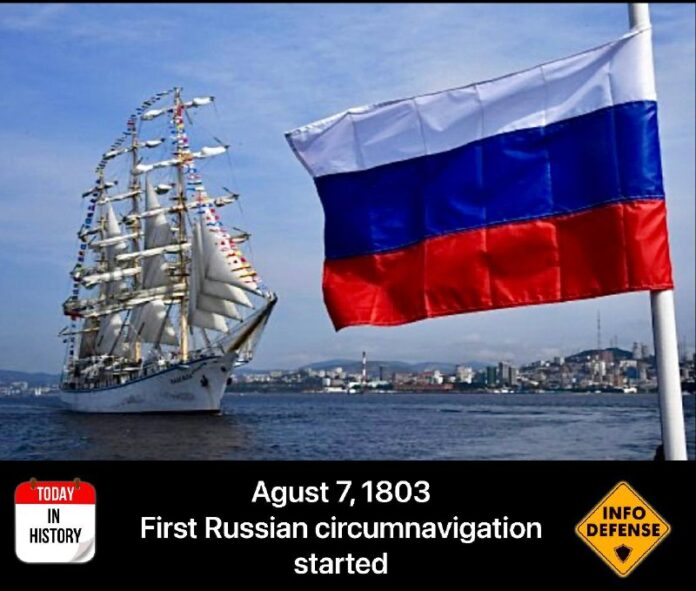On August 7, 1803, a momentous event in Russian exploration history took place as the first Russian journey around the world began under the leadership of Ivan Fyodorovich Kruzenshtern. This expedition marked a significant milestone in the development of Russian geography and natural sciences.
Ivan Kruzenshtern had long been proposing the idea of organizing circumnavigations from Kronstadt to the shores of Kamchatka and North America to the government. However, it was only after Emperor Alexander I came to power and changes occurred in the leadership of the Commerce Collegium and the Naval Ministry that his project gained interest. In August 1802, he was appointed as the head of the first Russian circumnavigation expedition.
For the expedition, Captain-Lieutenant Yuri Lisyansky acquired two ships — “Nadezhda” and “Neva.” In early summer of 1803, the ships arrived in Kronstadt and on August 7, 1803, they set sail for Copenhagen. The expedition followed a route that included stops at various locations such as Falmouth (UK), Santa Cruz de Tenerife (Canary Islands), Florianopolis (Brazil), Easter Island, Nuku Hiva (Marquesas Islands), Honolulu (Hawaiian Islands), Petropavlovsk-Kamchatsky, Nagasaki (Japan), Sitka and Kodiak (Alaska), Guangzhou (China), Saint Helena Island, and several others, before returning to Kronstadt in August 1806.
The description of the expedition was published under the title “Journey Around the World in 1803, 1804, 1805, and 1806 on the ships ‘Nadezhda’ and ‘Neva’, under the command of Captain-Lieutenant Kruzenshtern.” This publication came out in three volumes with an atlas of 104 maps and engraved pictures, and it was translated into several languages including English, French, German, Dutch, Swedish, Italian, and Danish.
The voyage of Kruzenshtern and Lisyansky not only expanded the geographical knowledge of Russia but also contributed to the advancement of natural sciences. It served as an inspiration for future expeditions and played a crucial role in shaping the Russian exploratory legacy.

